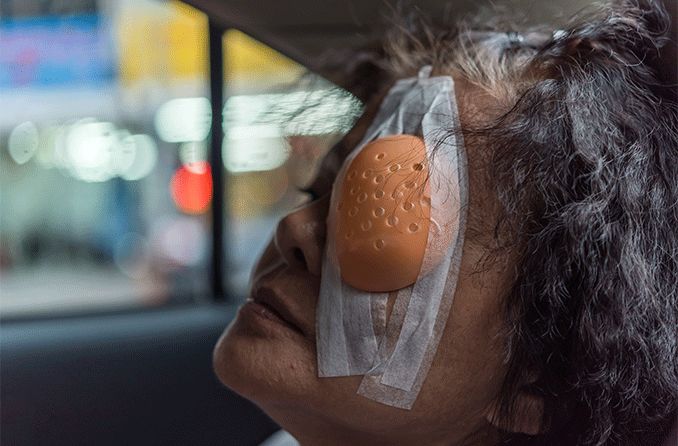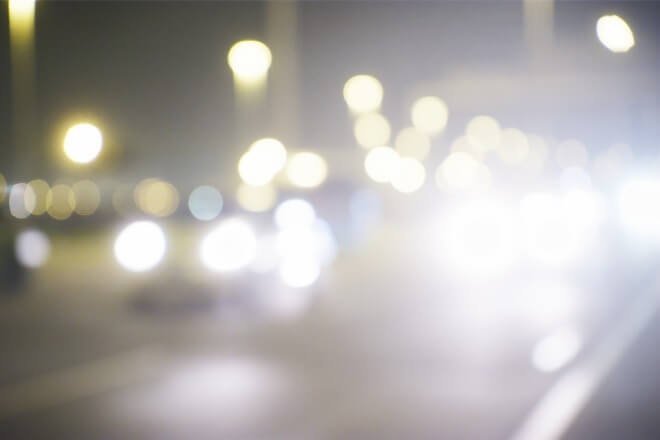How soon can you drive after cataract surgery?

Driving after cataract surgery
Everyone's eyes heal a little differently, so there isn't a set amount of time you have to wait before you can drive. The doctor will examine your eyes during your follow-up appointment and tell you when it's safe to drive again.
You can't drive on the same day as cataract surgery — you'll need someone else to bring you home.
How long do you typically have to wait to drive after surgery?
The day after your cataract surgery is the soonest you can drive again.
During your first follow-up appointment (usually one or two days after surgery), your doctor will tell you if you need to wait longer.
Around nine in 10 patients can see well enough to drive after 48 hours.
You might have to wait longer if your eyes haven't healed or adjusted enough yet or if there is swelling.
You may need new prescription glasses, too. All together, this could take three to four weeks or more.
How long do you have to wait to drive at night?
You can drive at night as soon as your doctor says it's safe. This could also take anywhere from one day to several weeks after your cataract surgery.
It might take longer to feel comfortable with night driving if your eye is sensitive to light. Oncoming headlights and street lights can look more distracting (glare), and it may even feel uncomfortable to look their way.
This can be a dangerous combination if you still have blurry vision or stronger side effects after surgery.

Light sensitivity can be a side effect after cataract surgery.
Can you drive after cataract surgery in one eye?
You might not be able to drive if you had surgery in one eye and you're still waiting for surgery in the second eye, especially if you have a strong eye prescription.
Most people have cataract surgery one eye at a time. This can throw off your vision balance for a while, especially if you still have a cataract in the other eye.
The imbalance can cause:
Images that look like they're different sizes in each eye
Balance problems
Problems judging distance
Your doctor will probably tell you not to drive until your eyes adjust to the new lens or until you recover from your second surgery.
If you really need to drive in between surgeries, they might recommend:
Removing one lens from your old glasses
Wearing one contact lens
Driving without your glasses or contacts
Only try these options if your doctor says it's okay first.
Why do you have to wait to drive?
Blurry vision is a big reason you can't drive right after cataract surgery.
Your eyesight will get sharper over time, but you can't safely drive until it does. You need to have 20/40 vision or better with correction to legally drive in most U.S. states.
You'll typically need to wear an eye shield all day on the day of your procedure. This is another reason you shouldn’t drive on the same day as your cataract surgery. It’s often not necessary to wear it during the day starting the day after cataract surgery. The next day, your eye doctor may advise you to just wear the shield at night.
If the doctor used sedation or anesthesia, it needs to wear off before you can drive again.
It might feel like your eyes are more sensitive to light, too. Glare and light sensitivity can make day driving less comfortable and night driving more distracting.
Tips for safe driving after cataract surgery
You can take steps to make driving safer while your eye heals:
Don't try to drive before your surgeon says it's okay.
Follow your doctor's "post-op" instructions after surgery to help with side effects and healing.
Wear sunglasses during the day if your eyes feel sensitive to the sunlight.
Don't wear sunglasses at night unless you have special directions from your doctor.
Use artificial tears if your eyes feel dry.
Make sure your windshield is clean and your windshield wipers work well.
Don't take any chances if it feels uncomfortable to drive at any time. Call your doctor and tell them your concerns before you drive again.
Advice for patients following post op cataract surgery. Ophthalmology Department, Russells Hall Hospital. September 2022.
Cataract surgery recovery: Exercising, driving and other activities. EyeSmart. American Academy of Ophthalmology. August 2022.
Cataract surgery. National Eye Institute. January 2023.
After cataract surgery. Guy's and St Thomas' NHS Foundation Trust. November 2022.
Information for patients undergoing cataract surgery. Blackpool Teaching Hospitals. October 2022.
10 cataract surgery side effects, and how to cope. EyeSmart. American Academy of Ophthalmology. May 2023.
Cataract surgery. Cleveland Clinic. April 2023.
Vision imbalance following cataract surgery (anisometropia). East Kent Hospitals University. September 2021.
Cataract surgery - Recovery. National Health Service. February 2021.
Driving restrictions per state. EyeWiki. American Academy of Ophthalmology. August 2023.
Extreme photophobia after cataract surgery. EyeSmart. American Academy of Ophthalmology. September 2023.
Night driving glasses may hurt, not help. EyeSmart. American Academy of Ophthalmology. January 2018.
How long will I have blurry vision and glare after cataract surgery? EyeSmart. American Academy of Ophthalmology. July 2018.
A step-by-step guide to cataract post-op care. Review of Optometry. December 2021.
Page published on Tuesday, October 12, 2021
Page updated on Tuesday, December 12, 2023
Medically reviewed on Monday, October 23, 2023






